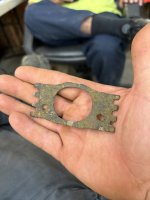pippinwhitepaws
Banned
- Jan 2, 2013
- 4,541
- 1,971
- Detector(s) used
- Whites prism III
- Primary Interest:
- Relic Hunting
now that is an interesting piece of paper...
somehikers has a shadow...above the needle...?
somehikers has a shadow...above the needle...?






